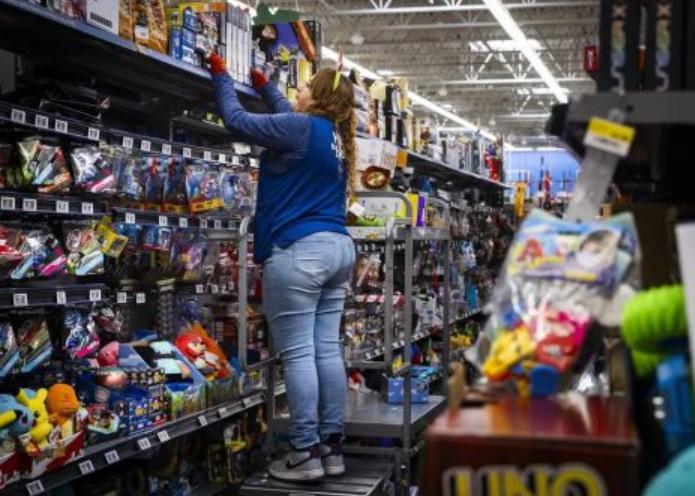
The CMBS market in Europe and the United States has indeed seen a rare "thunderclap" phenomenon, which is mainly related to the continued risk in the commercial real estate market. According to multiple reports and analyses, the incident mainly involved losses suffered by some investors in AAA-rated loans backed by UK shopping malls (commercial mortgage-backed securities, CMBS). Similarly, Barclays reported problems with CMBS backed by a mortgage on a building on Broadway in midtown Manhattan.
The "thunder" incident has attracted widespread attention because it marks some serious problems in the European and American financial systems, the first time since the 2008 financial crisis that the highest-rated CMBS products have lost money. Analysts said this indicated that the decline in commercial property values in the US and Europe was more severe than the market had expected. Global ratings giant Fitch warned that the value of office space in the United States could suffer a slump that exceeds the 2008 housing market crash, which has plunged about 40 percent so far, and stressed that the U.S. commercial real estate market has not yet bottomed out.
The reasons for the CMBS market explosion in Europe and the United States are multi-faceted, multi-angle and multi-dimensional. These factors interact with each other, aggravating the impact of the financial crisis and jointly leading to the collapse of the market. The main factors are as follows.
Rating agency rating inflation problem. During the financial crisis of 2007-2009, rating agencies in Europe and the United States allowed the priority of securities backed by subprime mortgages, such as CMBS, to fall to a level insufficient to protect the so-called "safe" tranches. This rating inflation enables financial institutions to engage in rating arbitrage, that is, to obtain a higher credit rating by lowering the quality of their loans. When Fitch was a major competitor, its ratings on CMBS were more lenient, which further exacerbated the problem. Although this problem improved after the crisis, its root causes were not addressed, which directly led to similar problems in the market again in the future.
Inadequate risk management by market participants. Although the loan characteristics of the CMBS markets in Europe and the United States have not changed significantly over this period, the overall performance of the market has been affected by rating inflation, resulting in inaccurate risk assessments of these products by investors. Especially during the recession, market participants failed to fully account for the high default risk associated with subprime mortgages. Despite the existence of strict regulatory rules such as the risk retention rule under the Dodd-Frank Act, most market participants in Europe and the United States have failed to fully comply with these rules or have flagrantly deviated from them in practice.
Information asymmetry and adverse selection problems. The information asymmetry in the CMBS markets in Europe and the US has led to the so-called lemon problem, in which low-quality loans are sold to unsuspecting investors. This information asymmetry not only increases the overall risk of the market, but also leads to market inefficiency. With the development of high-frequency trading and big data analytics technology, the market's reaction to information has accelerated, but this has also led to market overreaction, especially when negative news spreads quickly.
Market structure and market liquidity. The increase in issuance activity in the US and European markets, the diversity of market participants, and overly optimistic loan valuations and revenue forecasts have undoubtedly increased the vulnerability of the US and European markets. Markets in Europe and the US suffer from a severe lack of liquidity, especially during periods of large-scale defaults and market turbulence, which can eventually lead to a sharp fall in asset prices, setting off a chain reaction.
The impact of the macroeconomic environment. During the global financial crisis, the global liquidity crisis and economic recession had a significant impact on the CMBS market in Europe and the United States. The collapse of the U.S. subprime mortgage market has triggered turmoil in global financial markets, affecting a wide range of financial products, including CMBS. At the same time, the spread of global systemic financial risks has also intensified the instability of the European and American markets. In addition, the market contagion effect and policy uncertainty during Brexit have had a non-negligible impact on the CMBS markets in Europe and the United States.
In short, the "thunderstorms" in the CMBS markets in Europe and the United States not only reflect the difficulties of their commercial real estate markets, but also herald the beginning of a broader financial system risk in Europe and the United States.

A new survey released in the United States shows that in the context of rising prices and growing concerns among the public about the economic outlook of the country, there is a coexistence of frugality and differentiation.
A new survey released in the United States shows that in th…
By the end of 2025, the situation in the Middle East resemb…
According to Channel NewsAsia, international oil prices hav…
On Sunday, US President Donald Trump Trump met with Ukraini…
Officials in the Trump administration, speaking on Fox News…
In 2025, the Trump administration reshaped the global trade…